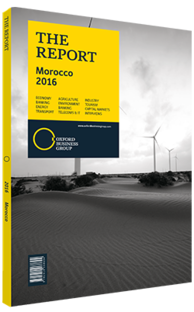Morocco improves agricultural production methods and boosts value-added crops
Like most of the countries in the Maghreb region, cereals constitute a key staple food in Morocco, with annual per capita consumption recorded at 173 kg in 2014, higher than the world average of 152 kg. According to a 2015 report by the UN’s Food and Agriculture Organisation (FAO) on key food trends in the Southern and Eastern Mediterranean region, per capita energy intake tends to be more dependent on cereals in countries with lower per capita income, like Morocco and Egypt, than in countries like Tunisia and Jordan, where GDP per capita is relatively higher.
Cereal Output
To meet demand and reduce pressure on its import bill, Morocco has sought to boost output volumes through enhanced production methods and better sector organisation. Led by its sectoral development strategy, the Green Morocco Plan (Plan Maroc Vert, PMV), which was first initiated in 2008, the cereal industry saw its output rise from an annual average of 5.84m tonnes between 2000 and 2007 to almost 8m tonnes between 2008 and 2015.
These advancements come on the back of efforts to encourage the use of certified seeds and fertilisers but also headways made in developing climate-tolerant varieties to help stabilise agricultural output in the face of volatile weather conditions. This has resulted in better productivity. Durum output, for example, rose from an average of 1.3 tonnes per ha between 2000 and 2007 to 1.7 tonnes between 2008 and 2015, while wheat output grew from 1.4 tonnes per ha to 1.9 tonnes, according to local press reports.
Water Stress
Morocco is targeting average annual output of 8.8m tonnes by 2020. Cereal production, however, remains highly contingent on weather conditions. Fluctuations in rainfall can prove particularly damaging to annual yields, as the latest droughts, which coincided with the start of the planting season in November 2015, have shown. Indeed, with rainfall in the crop year 2015/16 down 42.7% from its annual average, according to local press reports, a large number of farmers have held off from sowing their lands, opting instead to cultivate other crops. As a result, planted cereal areas covered just 3.6m ha in 2015/16, down from an average of 5m ha between 2008 and 2015.
Though much effort has been made to extend the network of modern irrigation systems since the launch of the PMV, total irrigated areas only account for 15% of agricultural land in Morocco. In the last crop season, only 10% of sowed cereal plantations were equipped with modern drip-irrigation systems.
Implications
Consequently, cereal output is expected to drop to 3.35m tonnes in 2015/16, falling almost 70% compared to the previous season, which returned 11.5m tonnes, while wheat and barley production are expected to reach their lowest levels since 2006/07. The sharp fall, however, is not expected to dramatically impact growth, as the contribution of cereal yields to the sector’s GDP has decreased in recent years on the back of government efforts to develop segments with higher value added. Consequently, even with lower yields, the sector’s contribution to GDP in 2015/16 is expected to be 15% higher than that of 2011/12, according to the local press, when another round of low precipitation caused cereal output to decrease to 5.1m tonnes.
This, however, still leaves the country exposed to global food price volatility, as it resorts to importing cereals to meet domestic demand. Between 2002 and 2011, the cereal trade deficit in Morocco increased by more than $1bn, according to the FAO. On average, the country imported 4.3m tonnes of cereals per year between 2008 and 2015, up from 3.4m tonnes between 2000 and 2007. Therefore, enhanced water resource management is key to stabilising agricultural output and ensuring food security, given that rain-fed agriculture still represents 80% of agricultural land in Morocco. The development of tailored seed varieties is also important to guard against climate change.
You have reached the limit of premium articles you can view for free.
Choose from the options below to purchase print or digital editions of our Reports. You can also purchase a website subscription giving you unlimited access to all of our Reports online for 12 months.
If you have already purchased this Report or have a website subscription, please login to continue.

